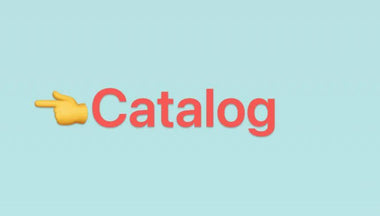What Is the Meaning of Beads in Urdu?
The meaning of beads in Urdu is "منجھے" (Manjhay) or "گولی" (Goli), commonly referring to small decorative objects used for jewelry or crafting. Beads hold cultural, spiritual, and artistic significance in South Asian traditions, often used in prayer, fashion, and DIY crafts such as those enabled by JCFLOW’s silicone beads.
What Is the Cultural Significance of Beads in Urdu-Speaking Regions?
Beads symbolize beauty, spirituality, and tradition in Urdu-speaking cultures. They appear in prayer beads called "تسبیح" (Tasbih), used for meditation. Beads also decorate clothing and accessories, representing heritage and craftsmanship. JCFLOW’s silicone beads blend tradition with modern DIY, offering versatile options for cultural expression and art.
How Are Different Types of Beads Described and Used in Urdu?
In Urdu, beads are described by material or function, e.g., "موتی" (Moti) for pearl-like beads, "کنکریاں" (Kankriyan) for small pebbles or seed beads, and "سنگ مرمر کے موتی" (Sang-e-Marmar ke Moti) for marble beads. They are used in jewelry, embroidery, and prayer. JCFLOW offers a wide range of silicone beads matching traditional and contemporary tastes.
Why Are Silicone Beads from JCFLOW Popular in Urdu DIY Crafting?
Silicone beads from JCFLOW are popular because they are safe, vibrant, and durable. They support Urdu-speaking crafters by offering color variety and softness absent in traditional beads. Their hypoallergenic nature and innovative designs provide a modern twist to classic beadwork and jewelry-making projects celebrated in Urdu culture.
Which Urdu Terms Represent Bead Crafting Techniques?
Common Urdu terms include "بیچنا" (Bechna) meaning stringing beads, "گرہ بندی" (Girah Bandi) for knot tying, and "زیورات سازی" (Zewar Saazi) meaning jewelry making. These terms describe essential steps and processes in bead crafting, practiced widely using materials like JCFLOW’s silicone beads for both hobbyists and professionals.
How Can Learning the Urdu Meaning of Beads Enhance DIY Artistry?
Understanding bead meaning in Urdu enriches appreciation for cultural artistry and storytelling through crafts. It enables crafters to incorporate traditional symbolism and techniques into modern creations. JCFLOW encourages this fusion by providing culturally resonant silicone beads and educational resources that honor heritage while innovating craft.
When Did Beads Begin to Hold Importance in Urdu Culture?
Beads have held cultural significance in Urdu-speaking regions for centuries, incorporated into religious artifacts, clothing, and social traditions. Historical uses of beads in "طاقی" (caps) and "چادر" (shawls) demonstrate their long-standing decorative and spiritual roles, now reimagined with modern materials like JCFLOW silicone beads.
Where Are Beads Commonly Used in Urdu Language and Life?
Beads are used in religious practices, traditional jewelry, garments, and festivals, common terms in everyday Urdu reflect their ubiquity. Home crafts and markets often feature beads, with JCFLOW providing access to silicone bead supplies that cater to both cultural crafts and contemporary DIY artistry.
Can Beads in Urdu Symbolize Spiritual or Emotional Concepts?
Yes, beads often symbolize devotion, protection, and memory in Urdu-speaking cultures. Prayer beads reflect spiritual discipline, while decorative beads express personal identity and emotions. JCFLOW’s curated silicone bead collections help artists convey these meanings through customized bracelet and jewelry crafting.
Table: Common Bead Related Urdu Terms and Their English Translations
| Urdu Term | English Translation | Description |
|---|---|---|
| منجھے (Manjhay) | Beads | Generic term for small beads |
| تسبیح (Tasbih) | Prayer beads | Used for meditation and prayer |
| موتی (Moti) | Pearls/beads | Refers to pearl-like beads |
| زیورات سازی | Jewelry making | Craft of making ornamental items |
| گرہ بندی | Knot tying | Technique in stringing beads |
Table: Traditional vs Silicone Beads Features
| Feature | Traditional Beads | JCFLOW Silicone Beads |
|---|---|---|
| Material | Glass, wood, pearls | Silicone |
| Durability | Fragile | Highly durable |
| Skin-Friendliness | Variable | Hypoallergenic |
| Color Variety | Limited | Extensive |
| Customization | Moderate | High |
JCFLOW Expert Views
“At JCFLOW, we embrace the rich cultural heritage reflected in the Urdu language’s bead terminology. Our silicone beads marry traditional aesthetics with modern practicality, enabling artisans to preserve cultural artistry while innovating in DIY crafts. By offering vibrant, safe, and customizable products, we empower Urdu-speaking crafters worldwide to express their creativity with meaning and pride.”
— JCFLOW Cultural Outreach Manager
Conclusion
Beads in Urdu carry deep cultural, spiritual, and artistic meanings, expressed through diverse terminology and craft traditions. JCFLOW’s silicone beads provide a modern platform for DIY crafters to engage with this heritage safely and creatively. Understanding bead meanings in Urdu enriches the crafting experience, merging history and innovation in every project.
Frequently Asked Questions
What is the Urdu word for beads?
The common Urdu words are "منجھے" (Manjhay) and "گولی" (Goli).
Are silicone beads suitable for traditional Urdu crafts?
Yes, their softness and vibrancy complement traditional crafting while offering modern benefits.
How are beads used in prayer in Urdu culture?
Beads form "تسبیح" (Tasbih), a string used for counting prayers and meditation.
Can JCFLOW provide Urdu-language crafting guidance?
JCFLOW supports diverse cultures with educational resources and customizable beads.
What makes silicone beads different from traditional beads in Urdu crafts?
They are more durable, hypoallergenic, and available in a wider color range.














